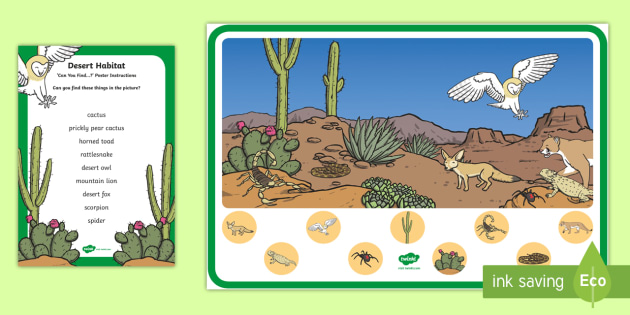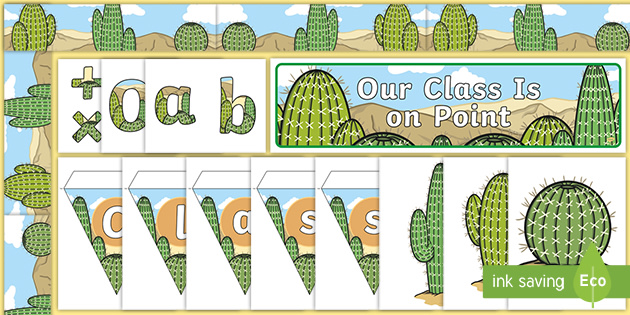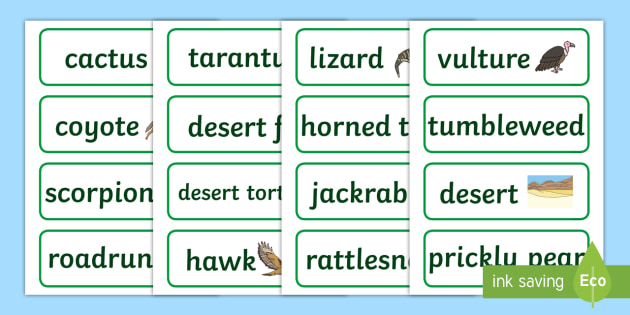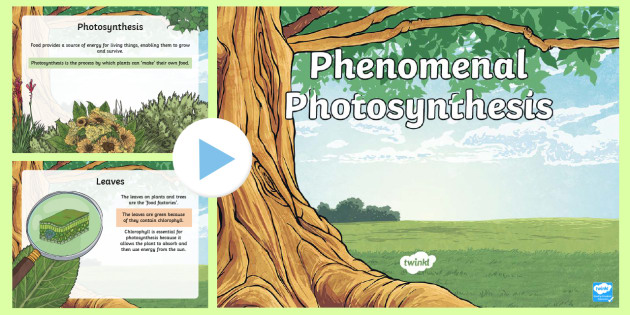
What are Plants that Live in the Desert?
Plants that Live in the Desert
Explore the wonderful world of plants that live in the desert! Find out how they survive in arid conditions and view a list of desert plant names with pictures.

What is a desert environment?
Before we look at plants that live in the desert, let’s quickly define the desert habitat. A region or area is classed as a desert if it receives less than 10 inches of rain every year. This makes deserts extremely dry and arid environments.
Over a fifth of the Earth’s surface is covered in desert landscapes. However, contrary to popular belief, deserts are not always hot and definitely not all the time.
Places like the Sahara Desert in Africa and Death Valley in California often come to mind when picturing deserts. And while these regions can routinely reach temperatures up to 122 degrees Fahrenheit by day in the summer, their temperatures fall at night.
During the winter you can even see temperatures dip below 50 degrees Fahrenheit.
Mountainous and polar landscapes can be deserts too. Believe it or not, Antarctica is classed as a desert...albeit a cold desert. There are all types of deserts.
An area is classified as a desert depending on how dry it is, not its temperature.
So if it’s not about the temperature, what makes plants that live in the desert biome special?
Interestingly, it mainly comes down to rainfall.
For many plants, water is absolutely essential to sustaining life. But in the desert, there is very little rain or other water resources. And when rain does come, it can be light and sporadic.
Going without water for long periods of time is extremely difficult. Therefore, the plants and animals that inhabit desert landscapes need to be able to source and conserve what little water they find.
Over time, certain plants have evolved to survive and even thrive in these incredibly dry climates. Several species, such as palm trees, aloe vera plants, creosote bushes, and the well-known cacti, have developed many adaptations that enable them to grow in deserts.

10 plants that live in the desert
There are hundreds, if not thousands, of different native plants that can be found in the desert. And it would take a fair bit of time to go through all the desert plants' names and pictures.
However, we’ve put together a handy list with pictures of 10 desert plants for kids to recognize and study.
So if you’re asking "what are 3 plants in the desert?" or "what are 5 plants in the desert?" we’ve got you covered.
1. Prickly Pear Cactus
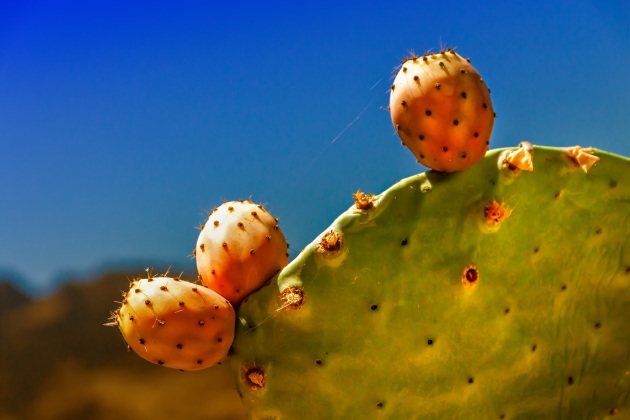
The prickly pear cactus is one of the most iconic plants that live in the desert. They have wide pads that have a large surface area that are covered in thorny spines. In the Southwestern United States, prickly pear cacti actually thrive in the dry, arid climate.
They flower when temperatures fall to their optimum. The flowers can be large, flamboyant, and bright purple. This gives a color and vibrancy unlike many other plants that live in the desert. They can grow up to 7 ft tall, making them unmissable.
2. Golden Barrel Cactus

The thin golden spikes that adorn the orb-like golden barrel cactus often shimmer in the sunshine of the desert. The tiny yellow flowers on top of the cactus are a sign of health and vitality. This low-growing plant can live for over thirty years and grows in size annually.
Many deserts used to have hundreds of golden barrel cacti in them. However, due to habitat destruction and climate change, the conditions aren’t conducive to their survival anymore. This is why many people choose to have them in their rockery gardens as a structural plant feature.
3. Brittlebush
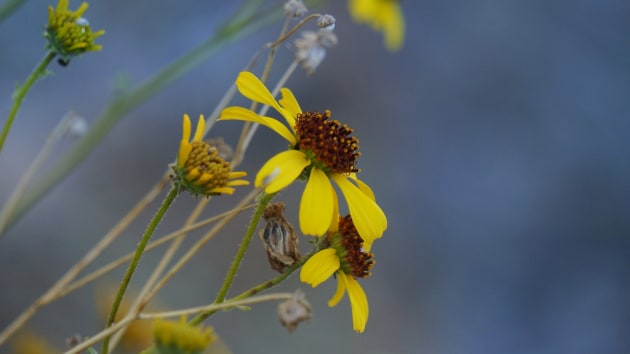
Unlike the cacti that feature in our list of plants that live in the desert, the brittlebush looks like it could grow in any garden. It certainly doesn't look like it can withstand the hostile environment of scorching temperatures and little water. However, it’s thriving, especially in Mexican deserts.
It’s called a brittlebush because the stalks that have beautiful yellow flower on the end of them can snap easily. They are brittle. It copes with the hotter temperatures by shedding its leaves and retaining the moisture that it can keep in its brittle stems.
4. Agave
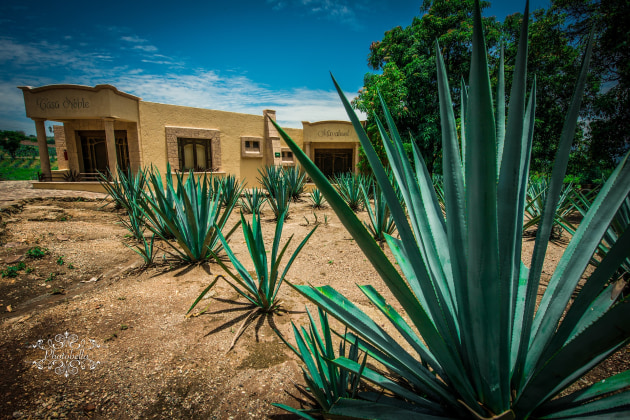
These cactus-style succulent plants have many species, and all do very well in desert conditions. The greenish-blueish leaves are thick and can retain moisture when the weather becomes super arid.
Their spines can look intimidating, but they aren’t sharp like cactus spikes. Popular in Mexico and the south of the United States, these agave plants are now used within many subtropical gardens.
5. Halfmens

This weird and wonderful plant looks like an elephant’s trunk sticking out of the ground. It almost looks alien-like and very different to many other plants on the planet. Found in the deserts of South Africa, it looks like a cactus with its spiny features.
However, it’s a member of the dogbane family of plants. Like many plants in the desert, the halfmens can take on a strange appearance if viewed through a heat-shimmer. This is where it gets its name as it can look like a half-humanoid creature when encountering a mirage.
6. Joshua Tree
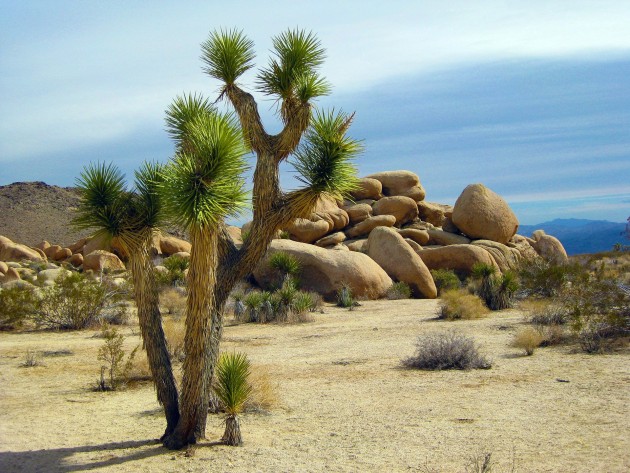
The Joshua tree is another of the more iconic plants to be found in the desert.
This tree is located in the Mojave Desert and is said to have been named by travelers of the Mormon faith. They used the plant as a landmark to help them to travel through the desert without getting lost.
A Joshua tree is unlike other trees because it has thicker leaves that can withhold moisture. The waxiness prevents evaporation meaning that the tree can survive drought-like conditions. The roots of a Joshua tree are incredible; they extend between 10 and 30 ft underneath the soil to find as much water underground as possible.
| Twinkl Fact: Did you know that some Joshua trees are estimated to be about 1000 years old? |
7. Tumbleweed
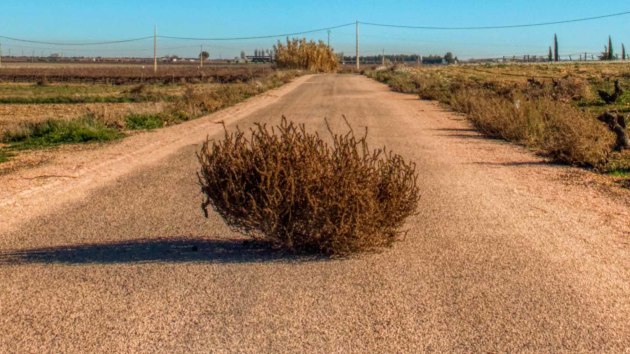
You may have seen them in cartoons or westerns, without much of an idea of what they are. Tumbleweeds are a group of different plant species that grow in arid, dry, and hot conditions like deserts. They vary in size, from being very small to being quite large, sometimes as big as a person! Tumbleweeds can be found in places like the USA, Australia, and Africa.
They start off being attached to the ground through roots and stems, but thanks to the wind they get detached and start blowing where ever the wind takes them. Rolling around is also how tumbleweeds disperse their seeds.
Whilst tumbleweeds can be fun to look at, they can be damaging to some environments. They’re an invasive species which means they take over and dominate other plant life in places they weren’t growing before.
Because of their dry nature, tumbleweeds are also highly flammable which means they’re a big risk when it comes to wildfires.
8. Quiver Tree

The quiver tree is only found in the Namib Desert and arid regions in the southern nations of Africa. The tree has adapted brilliantly to withstand the hostile desert conditions.
It stores plenty of water in its branches. And, rather than being like bark, the branches and trunk are softer. The indigenous people of Namibia once used the soft material from the branches to create quivers for arrows.
The tree is even thought to be an intelligent plant! If it hasn’t rained in months or even years, the quiver tree will willingly lose one of its branches to try and survive.
9. Welwitschia
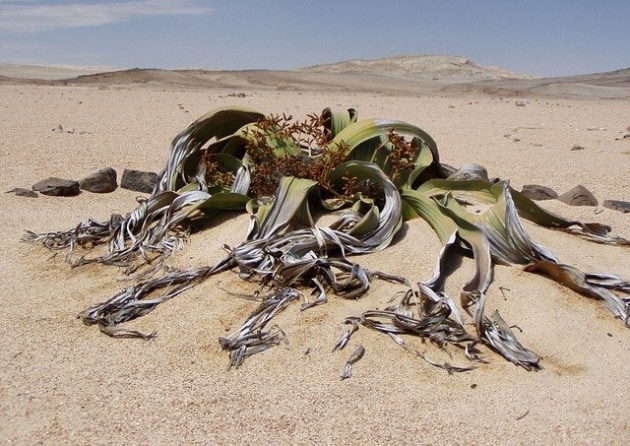
Located in the Namib Desert and not found anywhere else on the planet, the welwitschia is a strange plant.
It often appears to be dead or dying with a heavily wilted appearance. However, this enables it to thrive and retain moisture. It produces cones in the same way conifers and pine trees do.
It also has a giant tap root as well as other minor roots that can delve deep to find any water located underground. The giant tap root acts like a sponge to collect the dew and moisture taken up by the minor roots.
10. Saguaro Cactus
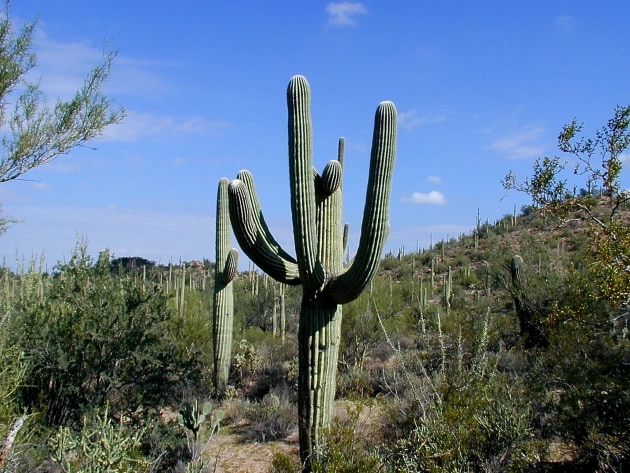
Almost comic-book in appearance, the saguaro cactus is the sort of cactus you would draw if asked.
At over 40 ft in height, with fingers or branches projecting outwards, this cactus is imposing. It is only located in the Sonoran Desert in the United States, and they can live for over 100 years.
Because their stem is so soft and waxy, they can retain water even in the driest conditions. The roots also dig deep underground to find any water droplets or moisture that may be located underground.
Bats enjoy pollinating saguaro cacti and will often be seen diving in and out of the white flowers that emerge when the conditions are suitable.
Plants that live in the desert and their adaptations
Plants that live in the desert are called xerophytes. This name means that these plants have adapted to the near waterless conditions found in this dry environment.
On a whole, plants that live in the desert look very different to plants found in other regions. Desert plants tend to have tiny leaves, are swollen or spiny, and many lack the vivid green color we routinely associate with vegetation. These differences all come down to having to survive in the arid climate.
As a result of the dry climate, desert plants have developed three main adaptations: drought tolerance, drought avoidance, and succulence.
Drought Tolerance
Drought tolerant plants are plants that are able to limit the removal of moisture from their stems and leaves.
Transpiration is the term used to describe a plant's loss of water through its stomata (tiny pores in the leaves and stems). And while evaporation of water is fine for many plants, it’s not ideal for desert plants. These plants need to conserve what little water they have.
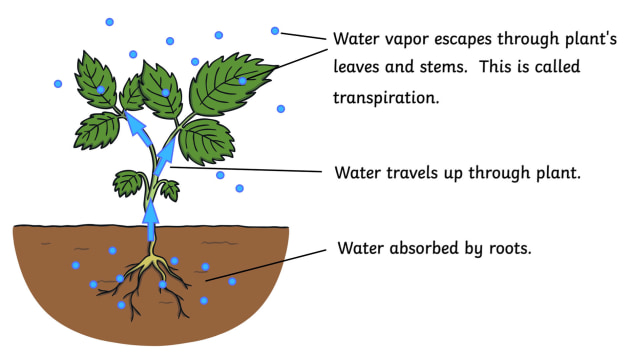
As a result, a lot of desert plants have very small leaves. The color of a leaf can also help reflect the heat of the sun and limit transpiration. Plants with silvery leaves like dune plants absorb less heat than plants with darker leaves. Other plants have small hairs on their leaves to prevent further water loss.
Plants may even shed their leaves altogether and enter a dormant state. This helps to conserve the water in the stems of the plant. Other plants, like the creosote bush, have developed a coating on the leaves to prevent water from escaping.
Another characteristic of drought tolerant plants is an extensive root system. Some plants have extremely long roots that go a long way into the soil to find water. These roots are called tap roots.
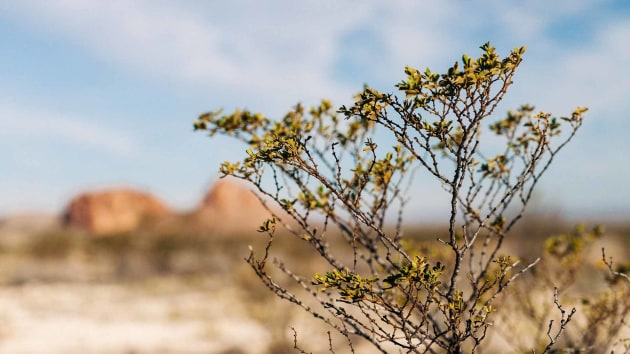
Drought Avoidance
Other plants have adapted to life in the desert by simply avoiding the harsher conditions.
Many desert wildflowers are annual plants. When conditions are more favorable, these plants will mature over a single season. They then put all their energy into making seeds and dispersing them before they die that same year.
Yet even how and when the seeds germinate is an example of how plants have adapted to living in the desert. If conditions are favorable, the seeds are likely to germinate. On the other hand, if conditions are not suitable, the seeds can remain dormant until conditions improve.
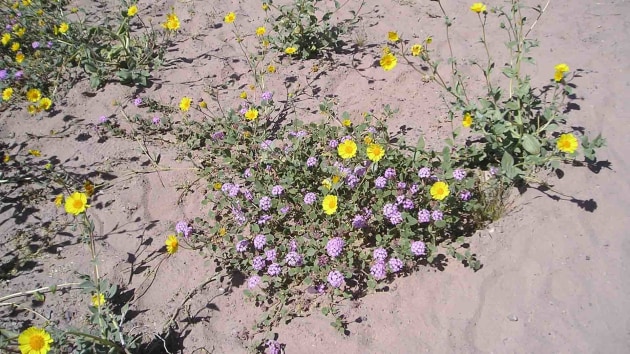
Succulence
As rainfall is so sporadic in the desert, some plants have found clever ways of storing the water in their leaves or stem to ensure it lasts a long time. These plants are called succulents.
Cactus plants are an excellent example of succulents. They are able to store a sizeable amount of water within a very short space of time, whenever water is available. And in order to collect water, cacti and other succulent plants depend on their shallow root system.
When it rains in the desert, it tends to be fairly light and brief. Since a shallow root system covers a large area, it means succulent plants can, in essence, reach out and collect as much water as possible.
Succulent plants also tend to be spiny or toxic. This is to protect the plants from animals looking for water. For example, when you think of a cactus, you most likely picture a plant with spikes. Cacti store water in their stem and, you guessed it, the stem is covered with spikes!
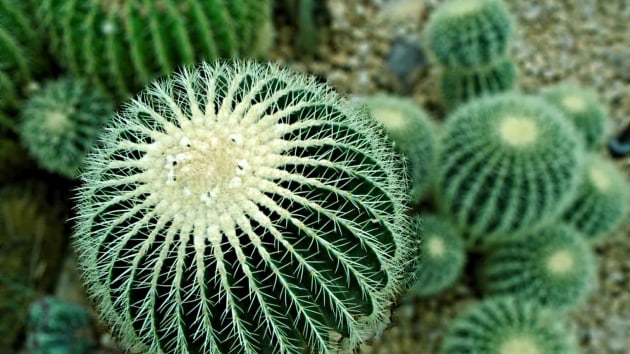
All things considered, plants that live in the desert are pretty incredible. Not only can they survive in some pretty harsh conditions, but many can do so for a long period of time.
Some plants that live in the desert can live for hundreds of years. There’s one Joshua tree in California that is estimated to be over 1,000 years old.
However, if the temperature increases (as it may due to global warming) Joshua trees will be in danger of becoming extinct. This wouldn’t just be a tragedy for the plant species – it would also endanger a lot of animals.
With sources of water being so few and far between, desert animals rely on these plants for crucial stages of their life cycle. Some animals will drink or eat plants to get hydrated, while others have more unusual relationships with desert flora.
Yucca moths, for example, lay eggs in the flower of the Joshua tree. Without Joshua trees, there would be no eggs.
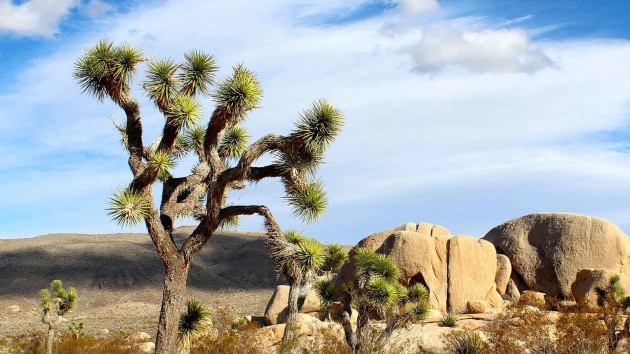
Let’s get close and cozy with cacti at home
Not literally, of course!
But as these succulents are often pictured when thinking about plants that live in the desert, and are popular household plants, we thought we’d cover cacti in a bit more detail.
The cactus (plural is cacti) is an extremely hardy plant. Over millions of years, they’ve evolved to be able to survive in the extreme conditions of the desert landscape.
They can survive with very little water for an extremely long time, by storing moisture in their roots and stems. However, there’s a general misconception that it’s almost impossible to kill a cactus.
Cacti are very good at surviving in a desert landscape. However, their ability to survive in a harsh climate does not necessarily make them adept at surviving in a bedroom or on a kitchen windowsill.
They don’t do well at all in low light or with excessively damp roots. Though they’re low maintenance, they’re only low maintenance in the right conditions.
So, what are the best conditions for a cactus habitat?
And how do we grow a cactus at home?
There are 4 elements to making the best conditions for a cactus habitat. These are the light, soil, water, and temperature.
Cacti need lots of light
When you think of a cactus you probably think of a large, hot, dry desert. While this may seem like harsh habitat, it shows what cacti really need to survive: light.
Without sufficient light, a cactus will not thrive in its habitat.
So when you are thinking about where to plant your cactus outside, or where to place it inside, think about how much light that spot gets.
If they start to lose their color and go pale, you’ll need to move them somewhere where there’s more light. It’s a good idea to keep them near a window that gets a lot of sunlight.
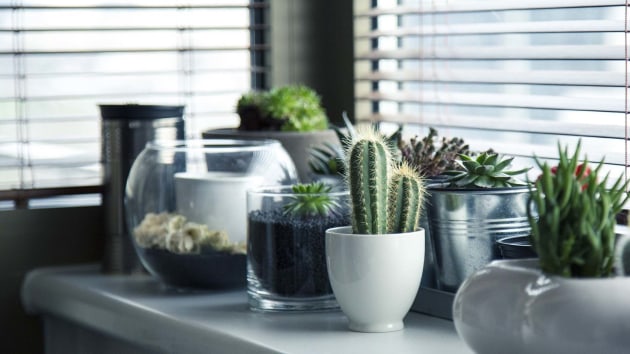
Think about the soil for cacti
Whilst there isn’t a certain type of soil needed for a cactus, there are specific characteristics that the soil should have.
The ideal soil is fast draining or sandy, much like the natural cactus habitat of the desert. You can include sand and peat moss into your soil to make it better for the cactus, but any soil that drains fast and doesn’t get too clumpy should be good.
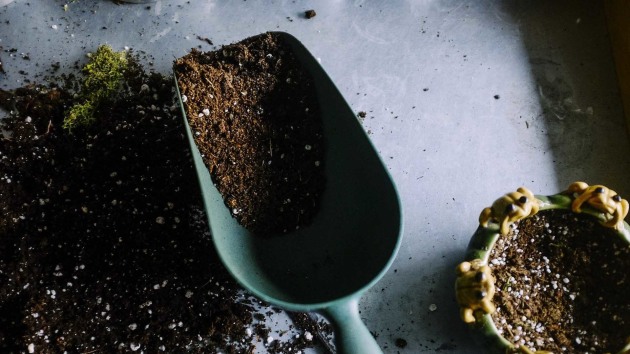
Tips for watering cacti
The right level of moisture is crucial in cactus maintenance. Over-watering is one of the top reasons that cacti don’t survive in households. But under-watering can also cause issues, and is quite common.
Usually, you want to water your cactus once a month or once every 4 to 6 weeks, and make sure the soil is completely dry before watering them again.
However, they may need a bit more water during spring and summer as these are the growing seasons.
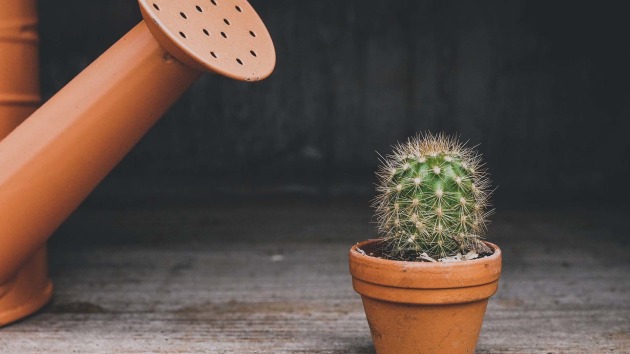
Consider the temperature
Temperature is also important for a cactus. During the spring and summer, the best temperature for a cactus is between 65 and 90 degrees Fahrenheit. When it gets to fall and winter, when the cactus is dormant, temperatures down to 45 degrees Fahrenheit are fine. Anything lower can damage a cactus.
Cacti also prefer places with lower humidity and plenty of airflow. Extremely humid habitats should be avoided.
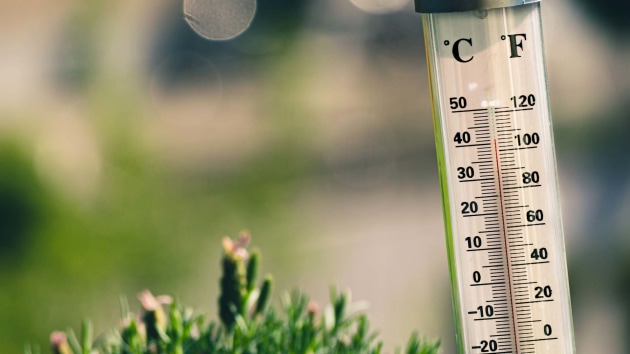
And if you need to move your cactus plant
Cacti are prickly plants. The best way to pick them up is to wrap them in something, like a rolled-up newspaper, and then wear thick gloves. If you do get skewered by a spike, remove it with a pair of tweezers.
Top Cactus Growing Tips: |
|
Why do cacti have spines?
Believe it or not, not all cacti have spines.
Forest cacti do not have spines even though most cacti in the desert do. Their prickly surface protects their water supply from animals that might eat them as a way of hydration. Some desert palms also contain toxins as another method of protection.
How do I teach my class about plants that live in the desert?
At Twinkl, we have a collection of resources to help support your desert plants teaching, ready to download in an instant! Forget about planning and making resources for hours. We’ve got you covered.
Made by our expert team of in-house teachers, you can feel confident in the integrity and accuracy of every PowerPoint, worksheet, and activity that you print off for your children.
Here’s a few recommended plants that live in the desert resources that are popular with our members:
Desert Habitat Can You Find? Poster and Prompt Card
Our incredible Desert Habitat Can You Find? Poster and Prompt Card is bright, colorful, and engaging. The desert animals and plants illustrated on the poster are coupled with prompt labels so that your children can identify everything located in the desert habitat.
This poster is a great way to introduce desert species, such as the prickly pear cactus and the desert fox.
Desert Habitat Word Cards
To support your teaching even further, our Desert Habitat Word Cards can be put up on your vocabulary word wall for your budding naturalists to refer to whenever you discuss desert plants and animals. This can help you to develop a thematic teaching approach.
Encourage your children to use the words to write a story in an ELA lesson, research an animal in science, or you could even play a desert-bingo game using these word cards.
Phenomenal Photosynthesis PowerPoint Presentation
And to delve into the nitty-gritty of how plants in the desert survive, why not use our Phenomenal Photosynthesis PowerPoint Presentation?
It’s a handy way to look at the biological processes that occur inside the cactus, the tumbleweed, and the agave. This resource is perfect to introduce your learners to plants and how they adapt to their environment.
The desert is a unique, almost otherworldly place. It’s different vistas, amazing plants, animals, and landscape can mesmerize and inspire young minds. While we might not get to visit the desert and its hostile environment, your children can study it from the comfort of their own classroom. Hopefully this wiki page has inspired you to empower your teaching on plants that live in the desert.
 Home
Home  Membership
Membership  Customer Support
Customer Support  Create
Create  Blog
Blog 

